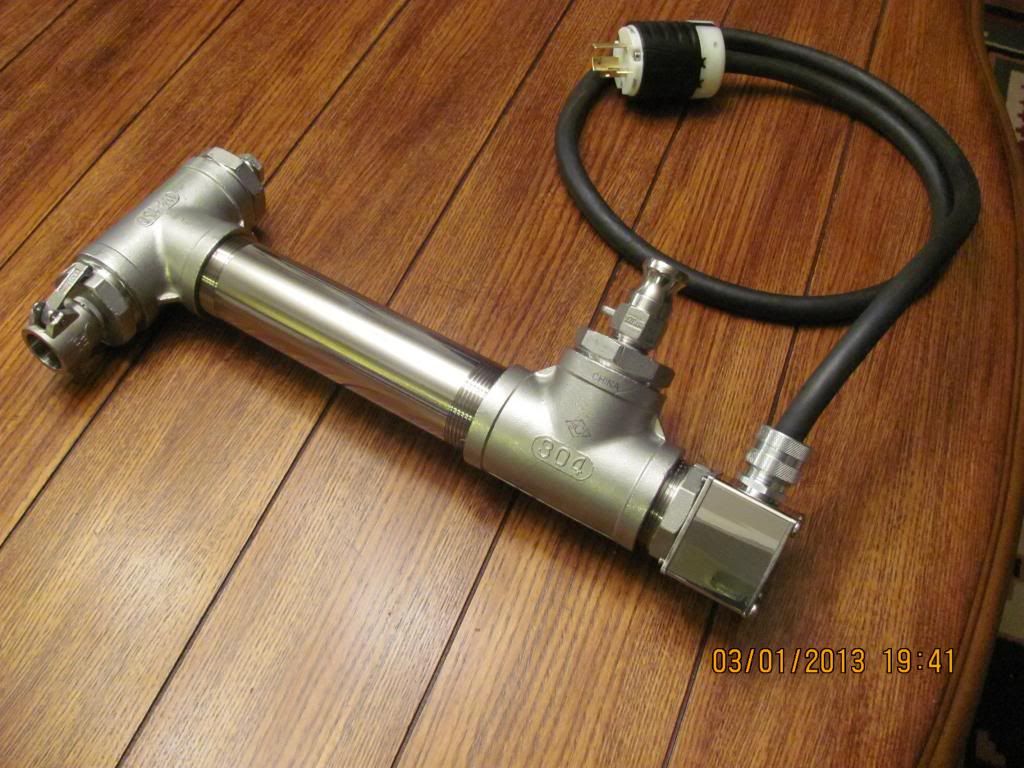 |
| New Chemistry Tools :) |
Most styles of beer I've wanted to or attempted to brew have been relatively successful with maybe a few mistakes/tweaks here and there. I have found that a lot of my brown and amber colored beers are not as successful as my lighter and darker ones. Hop-forward beers like IPAs and barley wine I feel can cover up what might otherwise be an underlying flavor issue. Over the years I've been brewing I've noticed this issue correlates with a lot of my malt-forward styles (particularly ones with higher amounts of caramel malt). It's not that these beers didn't taste good. More that they've just seemed one dimensional and lacking character. Most of the time I would describe the character as too much caramel. After trying my best to test different recipes and brewing techniques I believe I have stumbled onto the answer... Quite simply, water.
 |
| Faucet from RO filter |
More than 90% of beer is water but it is typically the last thing home-brewers really think about. We concern ourselves so much with the mechanics of brew day and other ingredients that we completely miss the most fundamental ingredient. Issues with water to a brewer are of course the flavor ions like sodium, chloride and sulfate but on deeper level brewers are concerned about the alkalinity of the water as it is connected to its buffering system. In all-grain brewing the mash is the black box of brew day. It is where a lot of the beginning chemistry on brew-day happens. The reactions that occur in the mash drive the pH downward. The optimal pH range for the enzymes in the mash is 5.2-5.6 with a target of 5.2. Being outside of this range can cause a lack of flavor extraction from the grains causing a more one dimensional character. Too far out of this range, and off flavors and bitter tannin extraction can occur. There are many things to think about when dialing into the mash pH. Not only does the water have a buffering system, but the mixture of grains in the mash do as well. The grains together with the water create a harmony and eventually settle on a pH. That is to say the grain recipe effects the pH as well as the brewing water does. Typically the answer to this complicated array of calculations is to use brewing software and either arm yourself with a water report for your city or start from scratch with RO water. You can then either modify your existing water or build the water profile you want for your recipe with RO/Distilled water. I have found this online calculator to be more helpful than the brewing software I have
http://www.brewersfriend.com/mash-chemistry-and-brewing-water-calculator/.

Since Conway doesn't provide enough detail in their water report for brewers, I felt more in control by starting with RO water. However, with some testing I have determined that Conway water is low in alkalinity (26ppm as CaCO3). This makes sense because in order to brew a good brown ale for example you need higher alkalinity (50-150ppm) in the water in order buffer the mash and not allow the pH drop too low.
Brew Day
I targeted a water profile that would be right in the middle for a medium OG brown ale (
in ppm.. Ca-75, Mg-5, Na-25, Cl-65, S04-75, Alkalinity-125). I used 3.75g Gypsum, 2g Epsom, 5g Calcium Chloride, 4.5g Calcium Carbonate, 4.25g Sodium Bicarbonate and got relatively close (
in ppm.. Ca-82.9, Mg-5.2, Na-30.7, Cl-63.7, S04-75.9, Alkalinity-124.9). Calcium Carbonate (chalk) doesn't dissolve almost at all in pure water with out the presence of dissolved CO2. So I kegged and carbonated 2 gals of RO water then mixed in the minerals (I managed to get most if not all the chalk to dissolve). The online calculator actually predicted the mash pH within 0.01 (predicted 5.49, actual 5.5). Had I known it would be that accurate I would have tweaked the mineral concentration to pull closer to 5.2 but instead I used phosphoric acid additions to slowly bring the pH down to 5.2. With all the additions that need to be made to the mash in order to pull the pH to target, it has gotten harder to maintain the mash temperature. Eventually I will build and move to an electric RIM system in order to maintain temps while testing pH but until then I may use a method like this
http://www.cedarcreeknetworks.com/heatstick.htm to maintain mash temps. At any rate the temperature did manage to stay above 150 for the 60 min mash. I have brewed this same recipe previously with my tap water. So I should be able to tell if there is a significant difference between the two beers.
 |
| RIMS Tube I would like to build |
 |
| RIMS System Diag |


 Since Conway doesn't provide enough detail in their water report for brewers, I felt more in control by starting with RO water. However, with some testing I have determined that Conway water is low in alkalinity (26ppm as CaCO3). This makes sense because in order to brew a good brown ale for example you need higher alkalinity (50-150ppm) in the water in order buffer the mash and not allow the pH drop too low.
Since Conway doesn't provide enough detail in their water report for brewers, I felt more in control by starting with RO water. However, with some testing I have determined that Conway water is low in alkalinity (26ppm as CaCO3). This makes sense because in order to brew a good brown ale for example you need higher alkalinity (50-150ppm) in the water in order buffer the mash and not allow the pH drop too low. 

